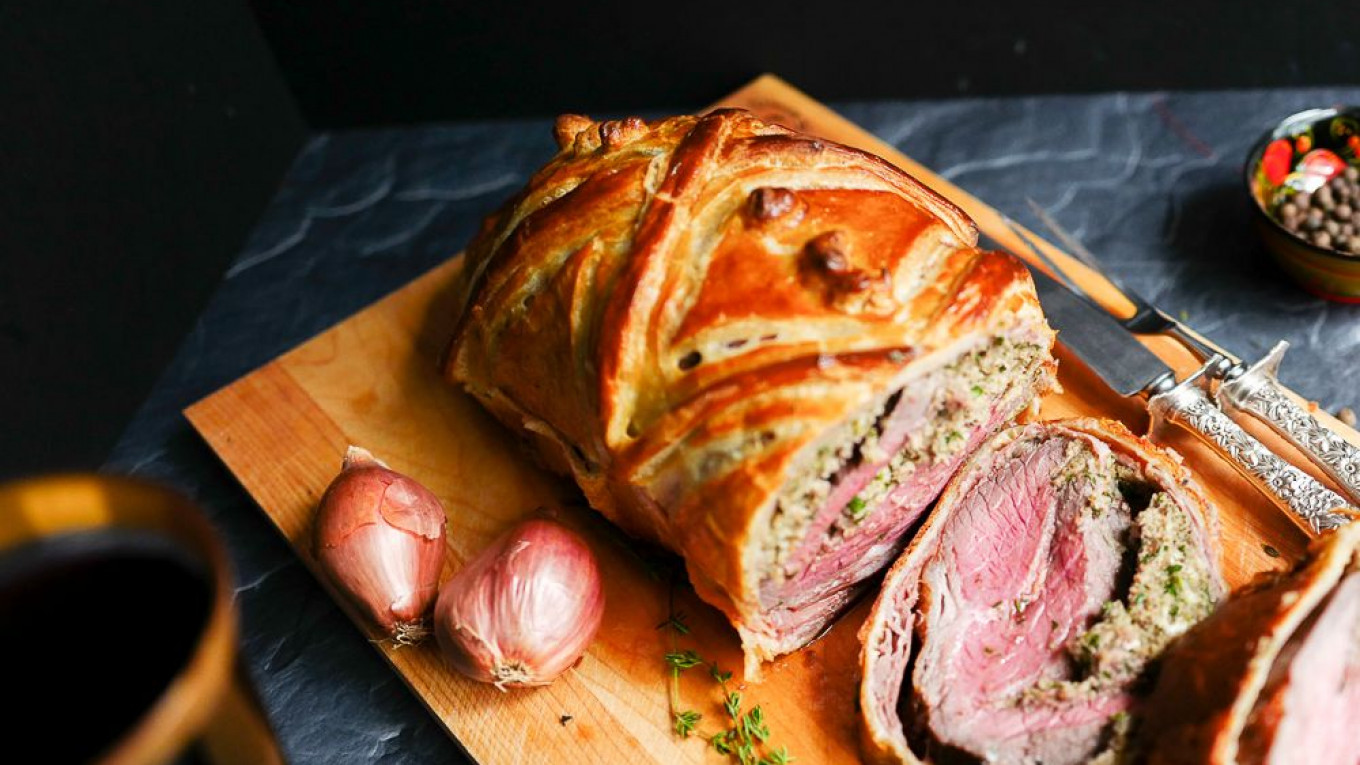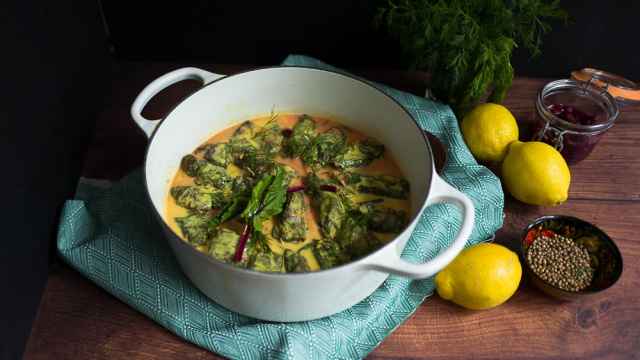Defenders of the Fatherland Day is upon us, that most masculine of all holidays. Feb. 23 nominally celebrates the foundation of the Red Army in 1918, during a hastily organized rout of Kaiser Wilhelm’s forces in the waning months of World War I. No sooner was the Red Army founded than it locked horns with the White Army in the bloody Civil War that raged through Russia until 1922. The victorious Red Army then moved through the 20th century, enjoying several notable achievements including the victory over Nazi Germany. Today, the Red Army is no more, but Feb. 23 is still celebrated with great fanfare and panache as a kind of one-way Valentine’s Day devoted to men, each of them a potential Defender if he cannot come up with a good excuse to opt out.
My own personal Defender spent seven years as an officer in the military and therefore feels entirely entitled to spend the day on furlough from all domestic responsibilities. He screens the epic Soviet classic film, “Officers,” and then a few of his favorite scenes from “17 Moments of Spring,” while enjoying a range of beverages. This takes up much of the day, so all that I need to do is produce a showstopper dinner to round things out.
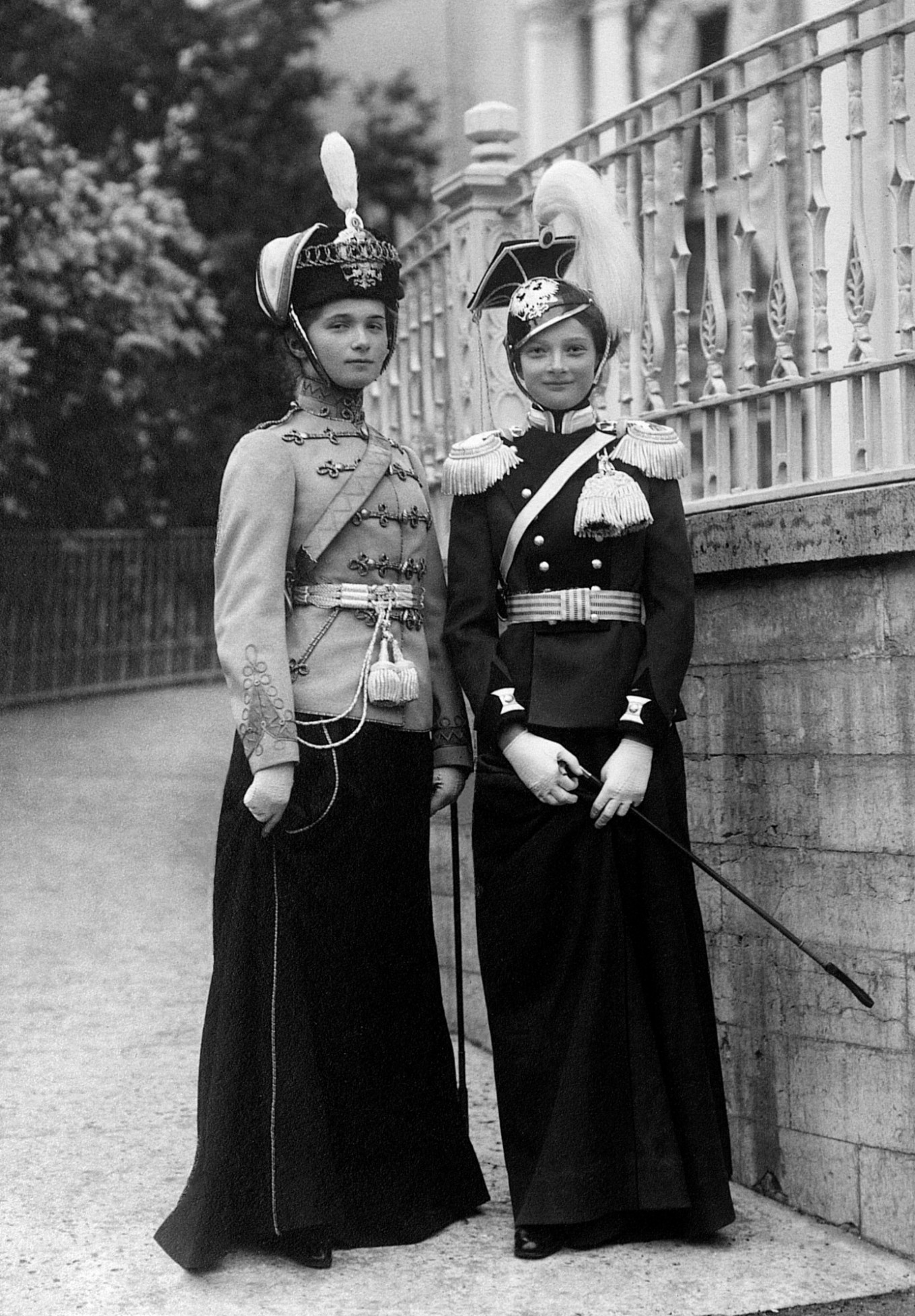
The mood of Defenders Day is unadulterated, testosterone machismo, calling for a rich meal. Enter: Hussar-Style Beef, (мясо по-гусарски), a dish with as fascinating a history as the swashbuckling soldiers for whom it was named. At first glance, it seems to be yet another clever adaptation of European cuisine by French chefs working in the kitchens of Russia’s nobility, but delve a little deeper and you find a more complex story.
Hussars emerged in Eastern Europe as the era of heavy armor waned and European armies engaged in a new kind of warfare, where mounted, lightly armed troops in the vanguard proved highly effective against the growing menace of the Ottomans. Hungarians, who combined their prowess in the saddle, ability with the bow, and fierce warrior culture, were among the first to deploy bands of hussars to harass the enemy. The origin of the word “hussar” may be akin to something like “brigand,” but soon enough these talented mounted troops were integrated into the armies of Europe.
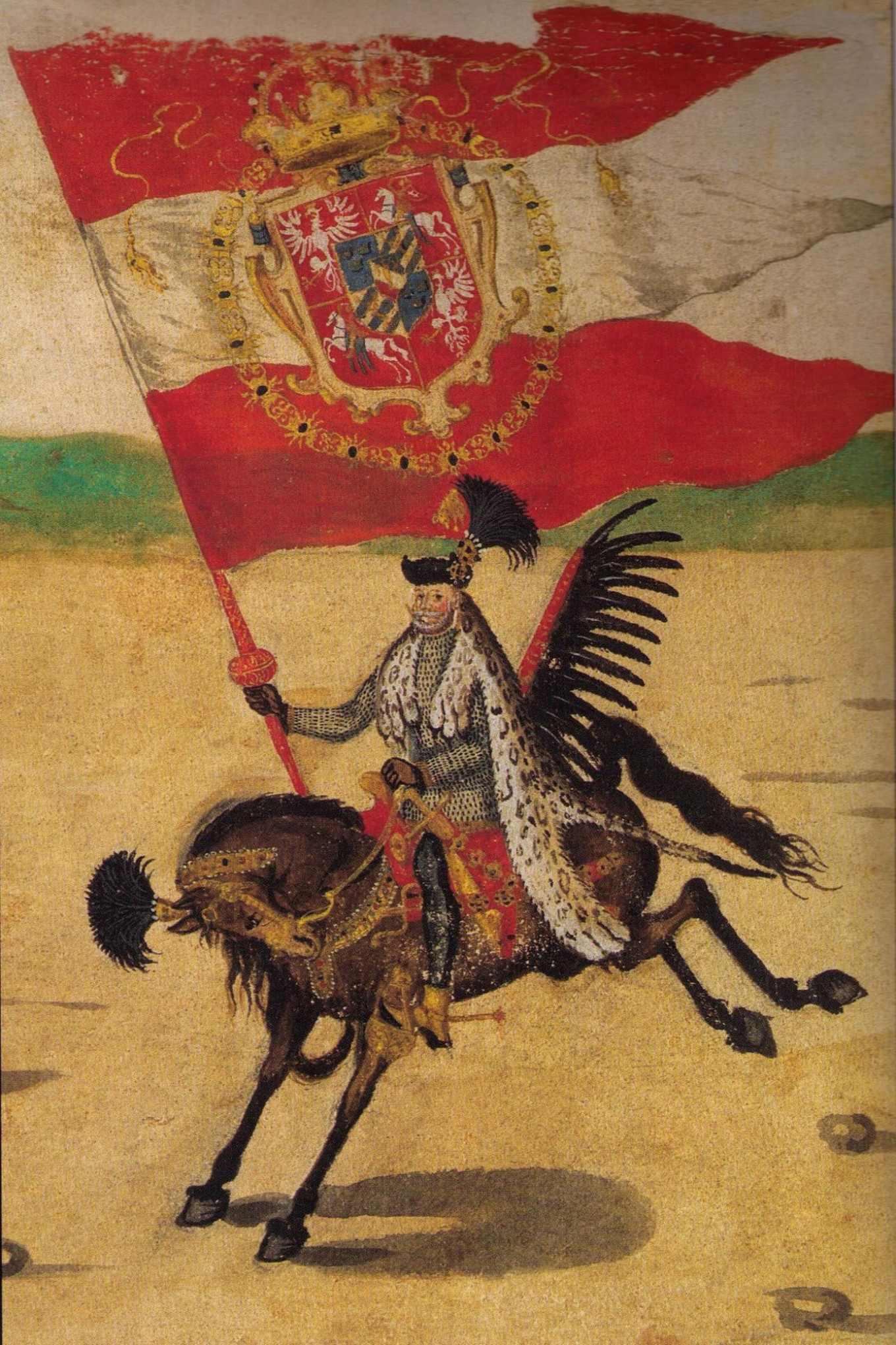
Exiled Hungarians brought their military skill to Poland, where the famous “Winged Hussars” attached large wooden frames to the backs of their saddles to protect them from rear attacks. To these frames, the hussars affixed rows of goose, eagle, and other feathers, and as they galloped to meet their foes, the feathers and wood made such a clatter that their enemies often expected a much larger force.
Russia, which had its own home-grown brigands such as Cossacks and Kalmyks to deploy for in guerrilla warfare, was comparatively late to introduce hussars into its regular army. But Peter the Great introduced several regiments of hussars during his major military reform in the early eighteenth century. Once Poland was absorbed into the Russian empire in the 18th century, hussars became a fixture of Russian life.
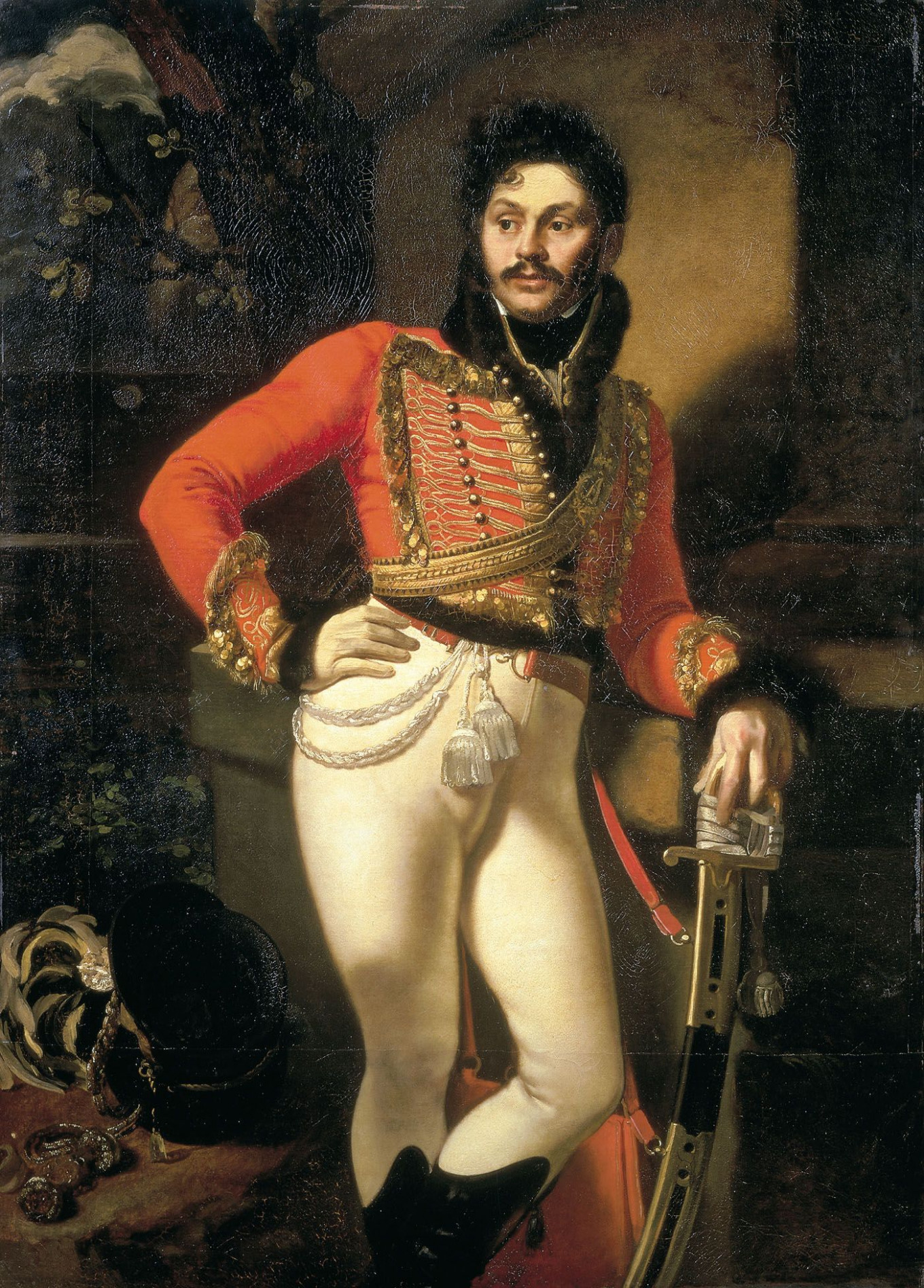
A hussar was immediately identifiable by his flamboyant uniform: a short, tightly fitting dolman with elaborate frogging, a short, fur-trimmed jacket called a pelisse, often worn off the shoulder, and an oversized helmet like an elongated top hat called a shapka, trimmed with fur, cords, and tassels. Perhaps it was their sartorial splendor that gave rise to the notion of hussars as reckless daredevils; these were men who fought hard, then partied, gambled, and wooed even harder. Russian literature is no stranger to hussars, indeed many of the titans of the Golden Age served in hussar regiments and mined these experiences for the exploits of their heroes; recall Mikhail Lermontov’s Parchorin in the Caucuses; or Tolstoy’s idealistic, earthy, and passionate Pavlograd Hussar, Nikolai Rostov, who declares at the opening of “War & Peace” that “Russians must either die or conquer!”
This “do or die” attitude echoes the spirit of the gallant British hussars who took part in the ill-fated “Charge of the Light Brigade,” during the Crimean War 1854, made famous by Tennyson’s eponymous poem. Miscommunication sends six hundred horsemen, led by Lord Cardigan, right into heavy Russian fire and certain death. “Someone had blundered,” as Tennyson observes, but the hussars and dragoons simply rode on, right into the history books:
“Boldly they rode and well,
Into the jaws of Death,
Into the mouth of hell
Rode the six hundred.”
It took me a while to tackle Hussar-Style Beef, as it always seemed too fussy and time-consuming for a day that is often dominated by the repetitive tasks of refilling chip dishes and replenishing beer mugs. But I finally rode bravely into the Valley of Complicated Dishes to master this most flashy of Russian he-men meals.
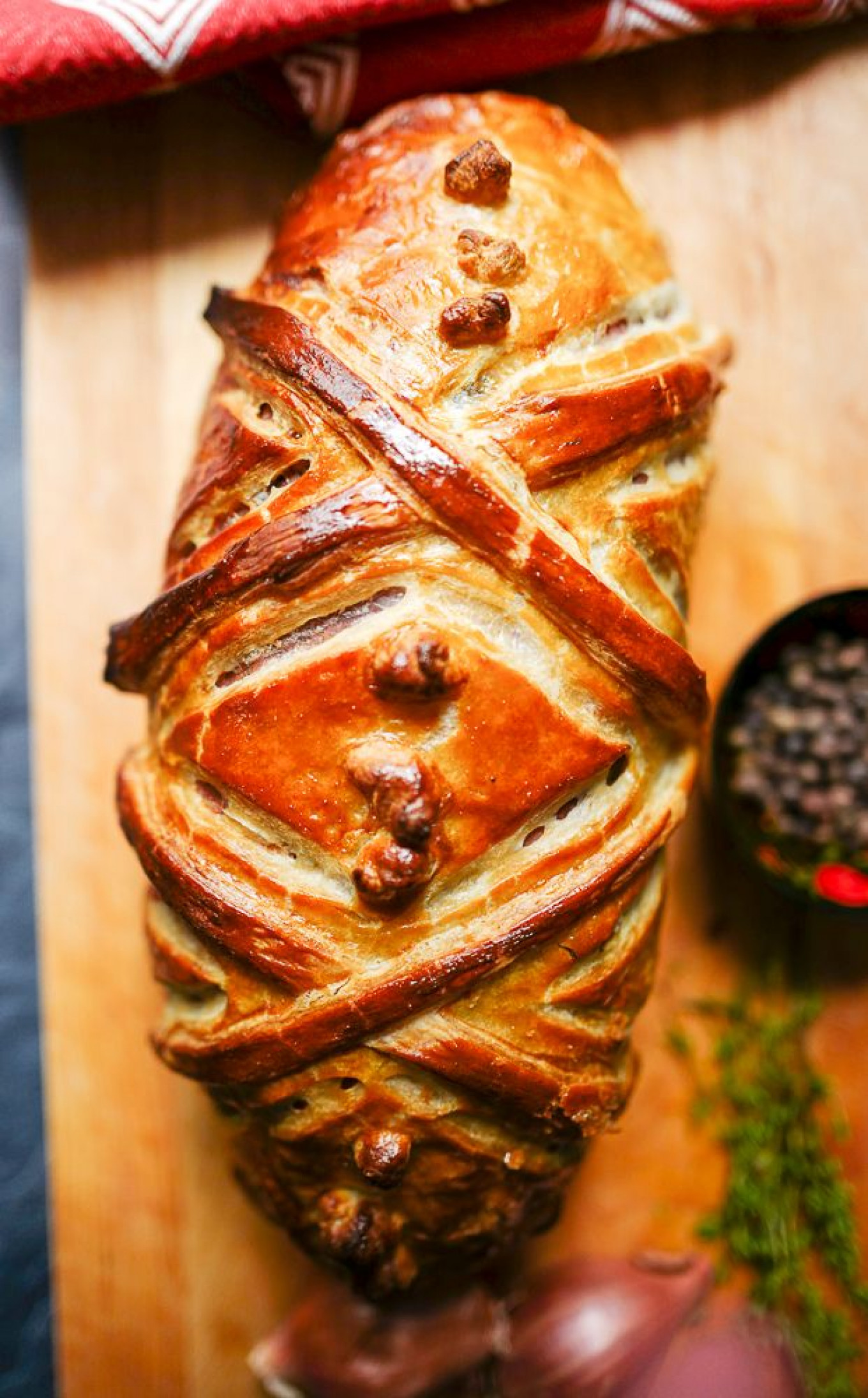
You might be tempted to dismiss Hussar-Style Beef as a simple riff on Beef Wellington: a roast of beef stuffed with a rich duxelles of mushrooms, onions, breadcrumbs, and cheese, then wrapped in pastry. But recall the fierce Polish Winged Hussars and then consider Pieczen Huzarska, a beloved Polish version of pot roast in which the beef is sliced hassleback-style, then stuffed a la polonaise with a filling of butter, breadcrumbs, egg yolks, and fresh herbs. The roast is then tied and braised in a rich wine sauce. The finished product is striped, reminiscent of the fluttering feathered frames of the Winged Polish Hussar.
Thus, like vodka, the mazurka, and the hussars themselves, Russia took something Polish and made it their own, in this case by adding mushrooms to the filling and encasing the striped stuffed roast in pastry and baking the beef to delectable perfection.
My version of Hussar-Style Beef takes some time: slow and steady wins the battle in this campaign. None of these steps is terribly challenging, but the final version benefits mightily from several rests, pauses, and periods of chilling in the refrigerator: and after all, what hussar could not benefit from a cooling off period every now and then? I salt the beef liberally to cut down on the cooking time and chill the filling for at least 2 hours to both allow the flavors to develop and to make it much easier to handle. Chilling the roast once it is stuffed helps it to keep its shape, as does wrapping the stuffed roast in prosciutto — a trick blatantly borrowed from Beef Wellington, but one I highly recommend not only for the extra flavor layer but also to keep the stuffing in place and avoid gunking up the pastry. Finally, more is more with the egg wash: hussars are nothing if not flashy! I can’t think of a better way to turn a plain old round roast of beef into a swashbuckling daredevil of a dish fit for any Defender you may have lying around watching old movies!
Congratulations to all the Defenders, and particularly the Hussars!
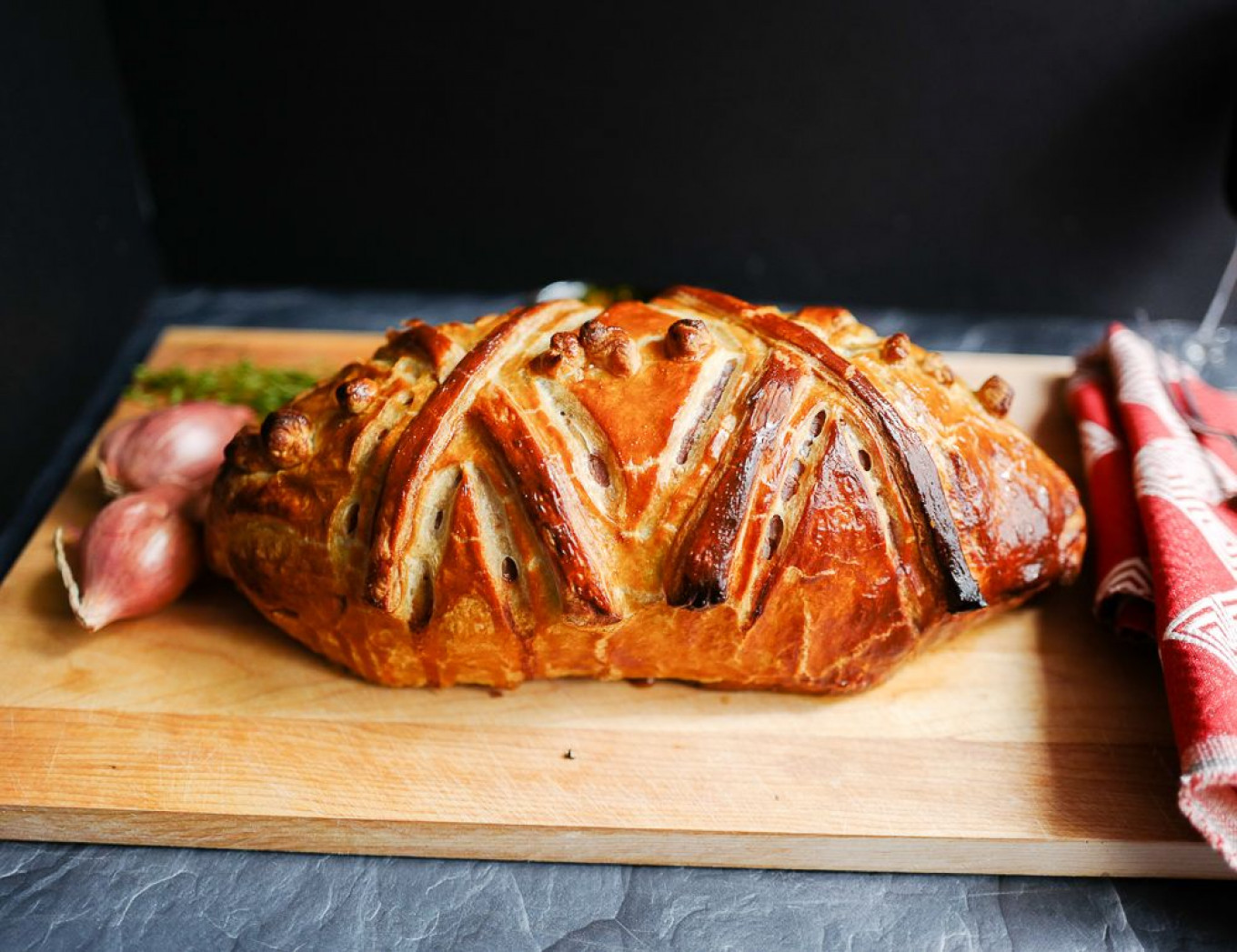
Hussar-Style Beef
Ingredients
- 1 beef round roast or tenderloin of approximately 3 pounds (1.5 kilos)
- 2 Tbsp olive oil
- Salt and pepper
- 20 pieces of thinly sliced prosciutto
- 1 box of puff pastry (14 oz or 400 grams), thawed in the refrigerator overnight
For the stuffing
- 1 shallot, finely chopped
- 4 Tbsp unsalted butter
- ½ lb (250 grams) mushrooms, cleaned and roughly chopped
- 1 tsp salt
- 2 tsp ground allspice
- 2 tsp freshly ground pepper
- 1 Tbsp fresh thyme
- 1 cup (230 ml) fresh breadcrumbs
- 5 oz (150 grams) grated Swiss cheese
- 2 Tbsp prepared horseradish
- ⅓ cup (80 ml) chopped fresh parsley
- 2 egg yolks
- 1 whole egg
Instructions
- Salt the roast generously and wrap it up in plastic wrap; chill for at least 2 hours and up to 6.
- While the salted beef is chilling, make the filling. Melt the butter in a skillet and sauté the shallots until they are limp. Add the mushrooms and sauté until they reabsorb all of the liquid they’ve expressed (about 10 minutes). Let the mixture cool to room temperature. Add the mushroom mix to a food processor fitted with a steel blade. Add the cheese, 2 egg yolks, thyme, parsley, spices, salt and pepper, horseradish, and breadcrumbs. Pulse to combine. Refrigerate the mixture for 2 hours.
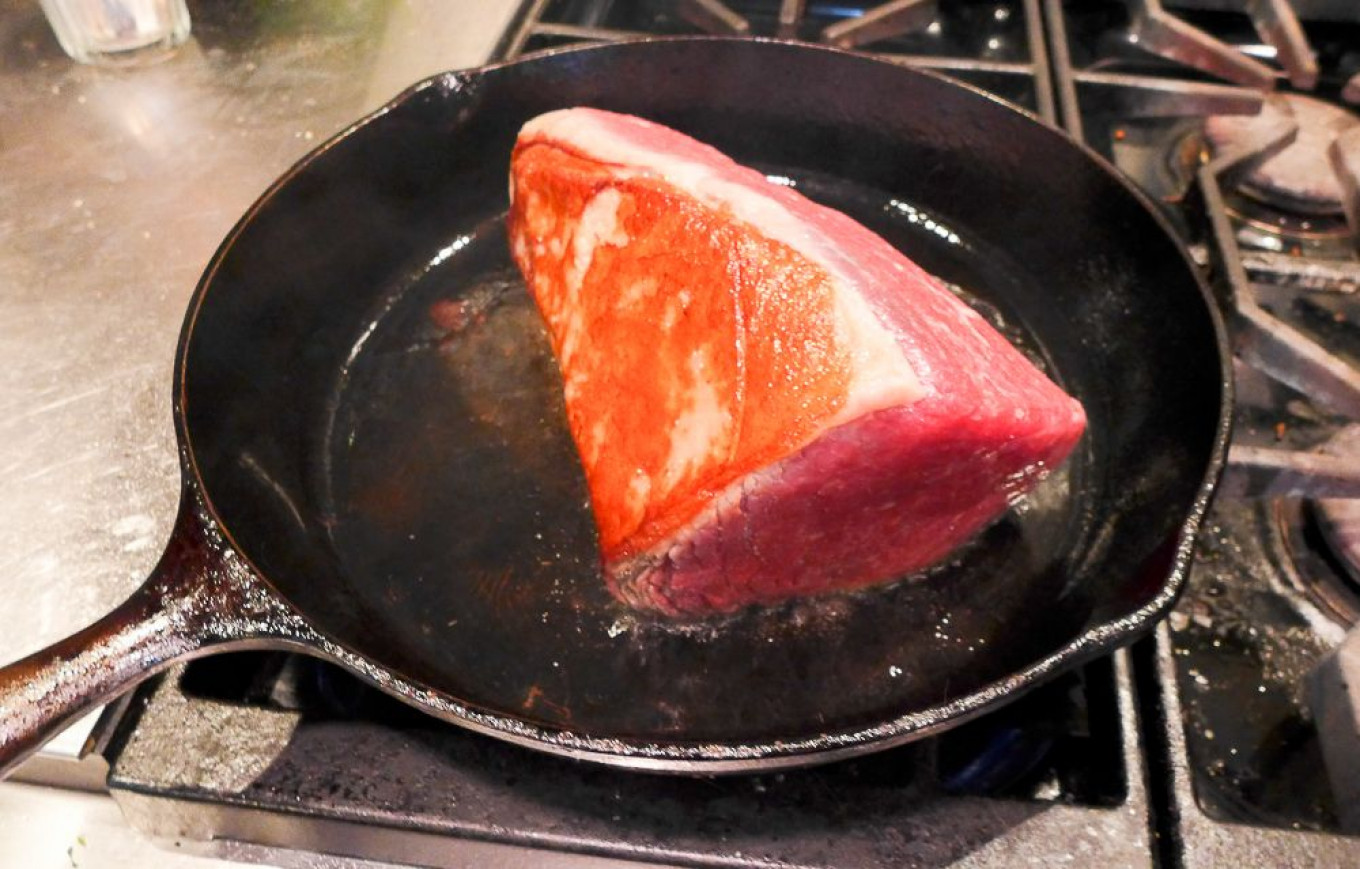
- Pat the beef dry. Heat the olive oil in a skillet and sear the beef roast on each side until browned (about 3-5 minutes for each side). Let the meat rest on a cutting board for half an hour. Slice the beef hasselback style at 3/4-inch intervals, cutting to approximately 3/4 inches from the bottom. Season the spaces between the slices with salt and pepper, then pack the spaces between the slices with stuffing. Wrap the stuffed roast in plastic wrap and chill for 20 minutes. This will help it keep its shape.
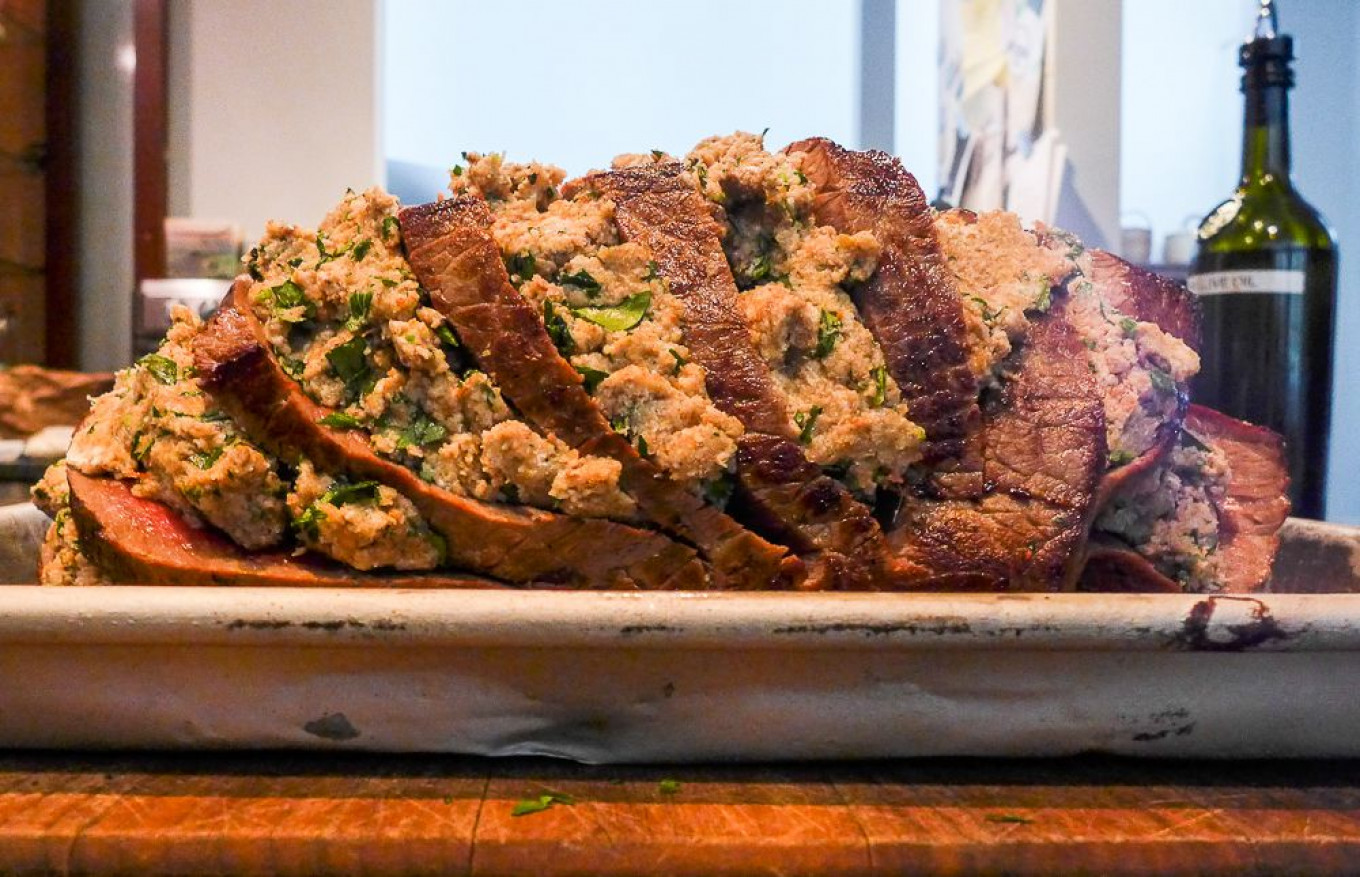
- Preheat the oven to 400ºF (200ᵒC). Line a baking sheet with parchment paper.
- Lay the prosciutto slices out on a double layer of plastic, so that it creates an area slightly taller than the roast and several times wider. Then carefully roll the roast up in the prosciutto. Wrap the roast in plastic wrap and chill it for 30 minutes.
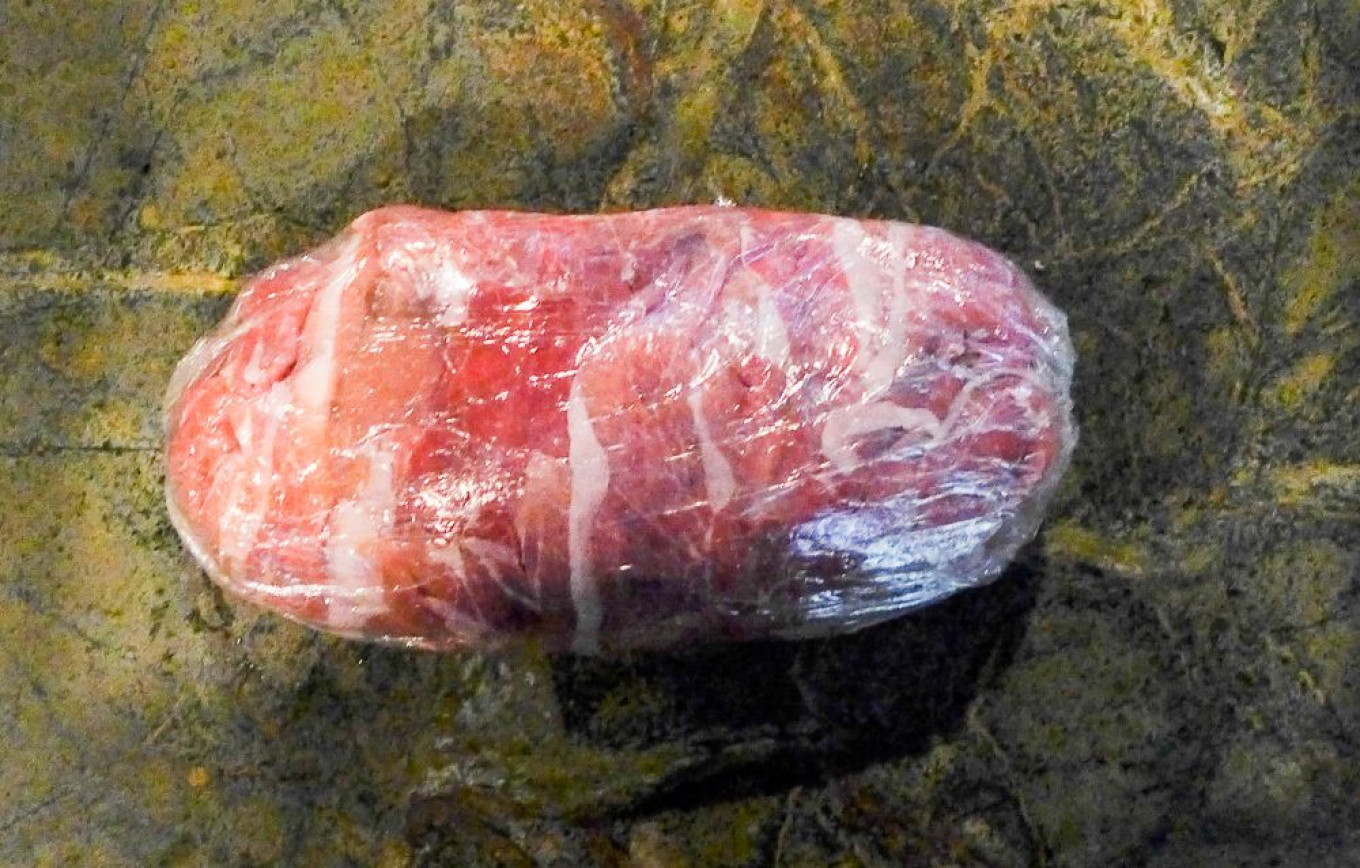
- Whisk the remaining egg with a teaspoon of water. Roll out the thawed puff pastry on a well-floured surface. Remove the plastic wrap from the roast and wrap the roast in the puff pastry. Seal the edges with the egg wash and crimp the ends. Decorate the surface with extra pastry. Use a sharp knife to create a few small slits on the surface.
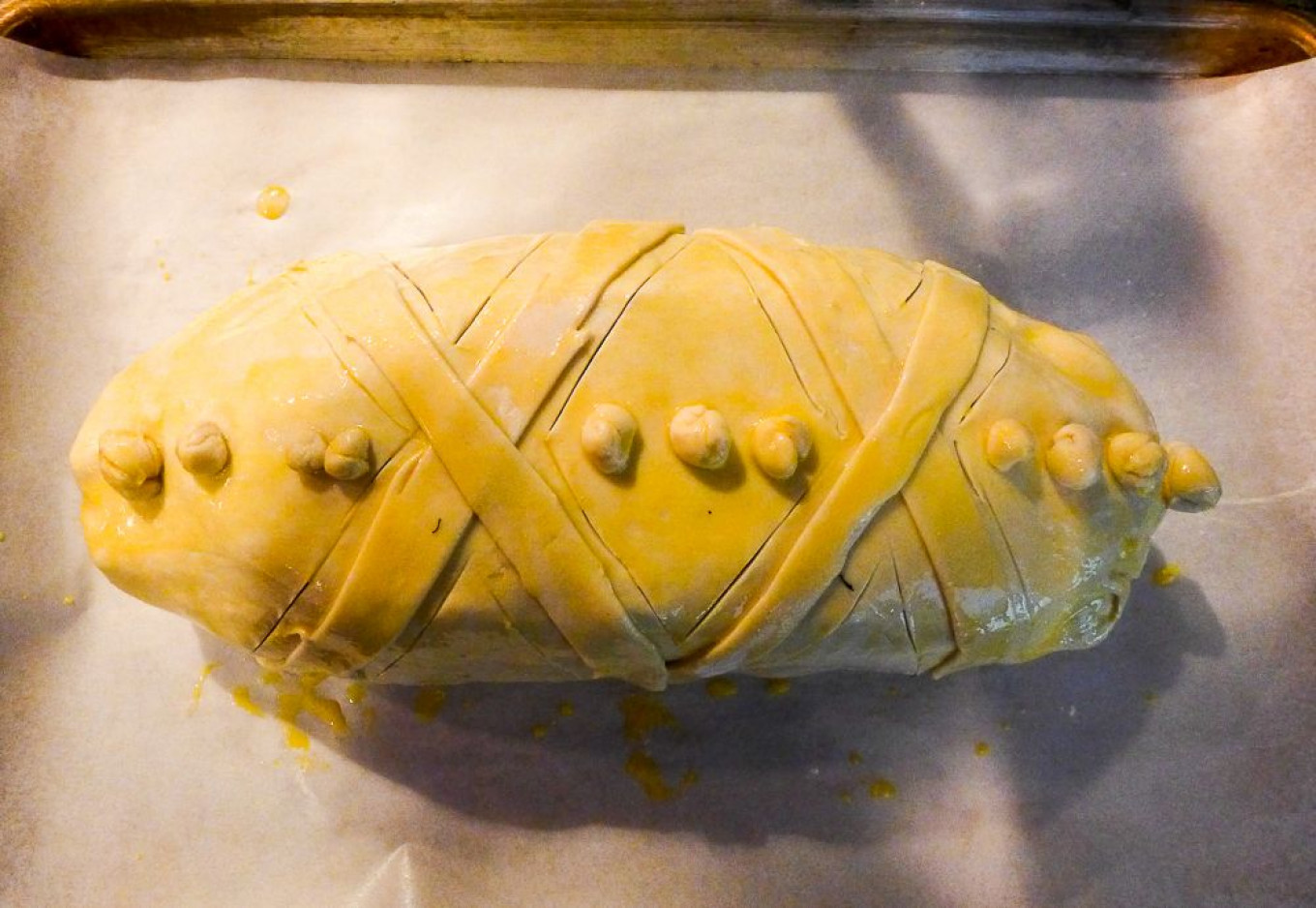
- Place the roast on the prepared baking sheet and bake for 40-45 minutes, rotating it halfway through to ensure that the roast is evenly cooked. Take care that the pastry does not get too brown by tenting it with foil if necessary.
- Let the roast stand for 15 minutes before you slice and serve it.
- Serve with roasted potatoes, blanched vegetables, or a crisp salad. Enjoy with red wine or several shots of vodka!
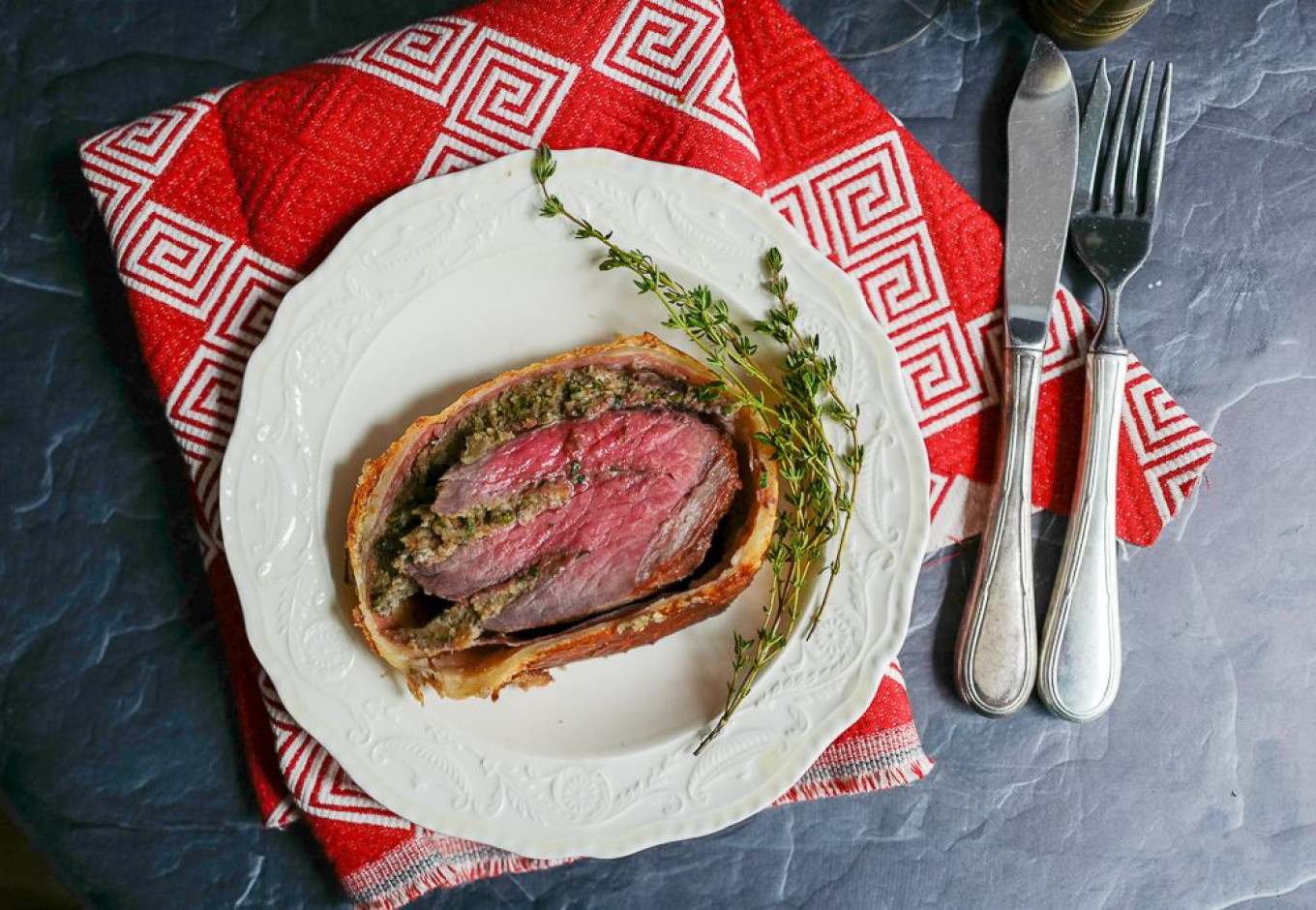
A Message from The Moscow Times:
Dear readers,
We are facing unprecedented challenges. Russia's Prosecutor General's Office has designated The Moscow Times as an "undesirable" organization, criminalizing our work and putting our staff at risk of prosecution. This follows our earlier unjust labeling as a "foreign agent."
These actions are direct attempts to silence independent journalism in Russia. The authorities claim our work "discredits the decisions of the Russian leadership." We see things differently: we strive to provide accurate, unbiased reporting on Russia.
We, the journalists of The Moscow Times, refuse to be silenced. But to continue our work, we need your help.
Your support, no matter how small, makes a world of difference. If you can, please support us monthly starting from just $2. It's quick to set up, and every contribution makes a significant impact.
By supporting The Moscow Times, you're defending open, independent journalism in the face of repression. Thank you for standing with us.
Remind me later.



